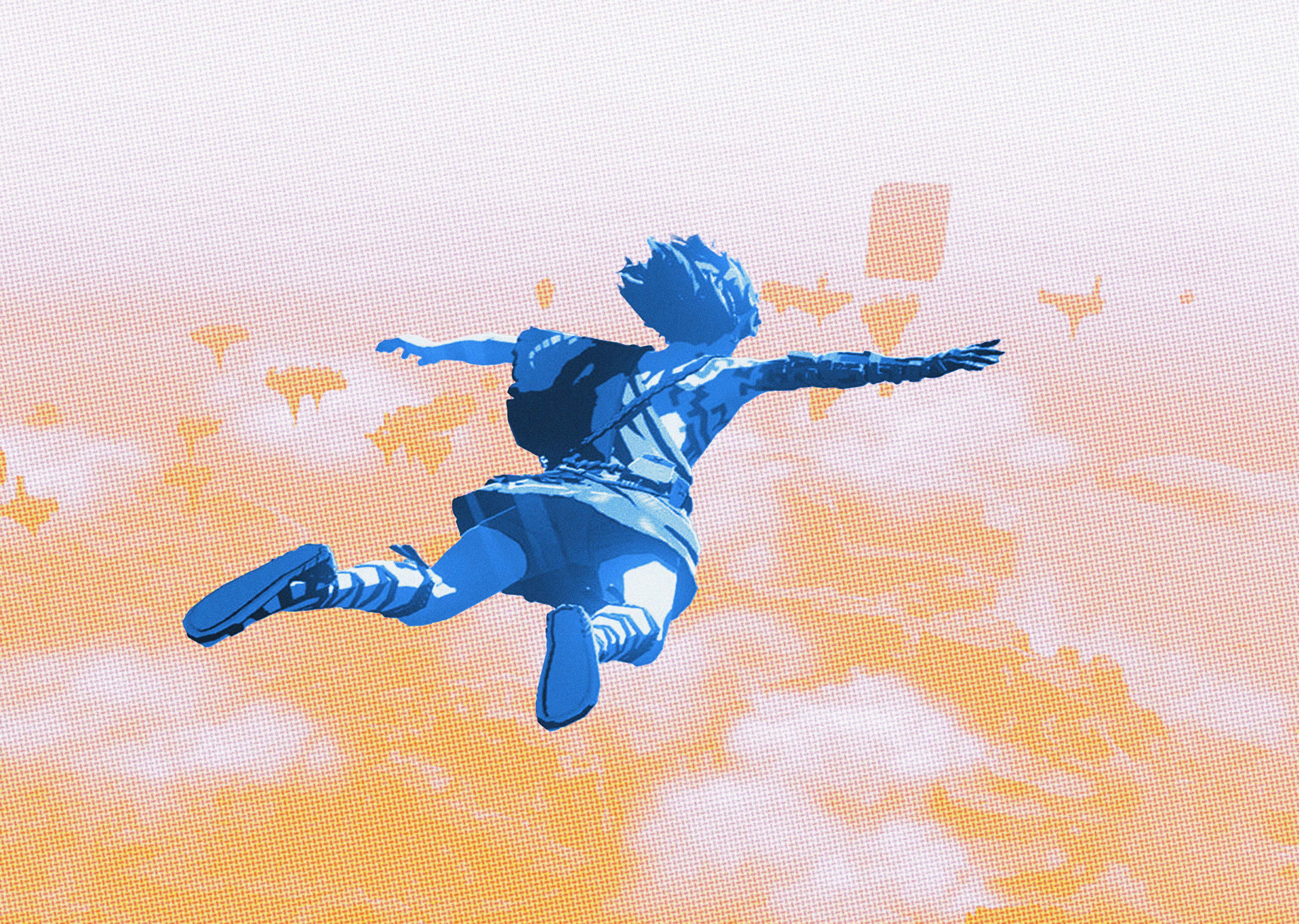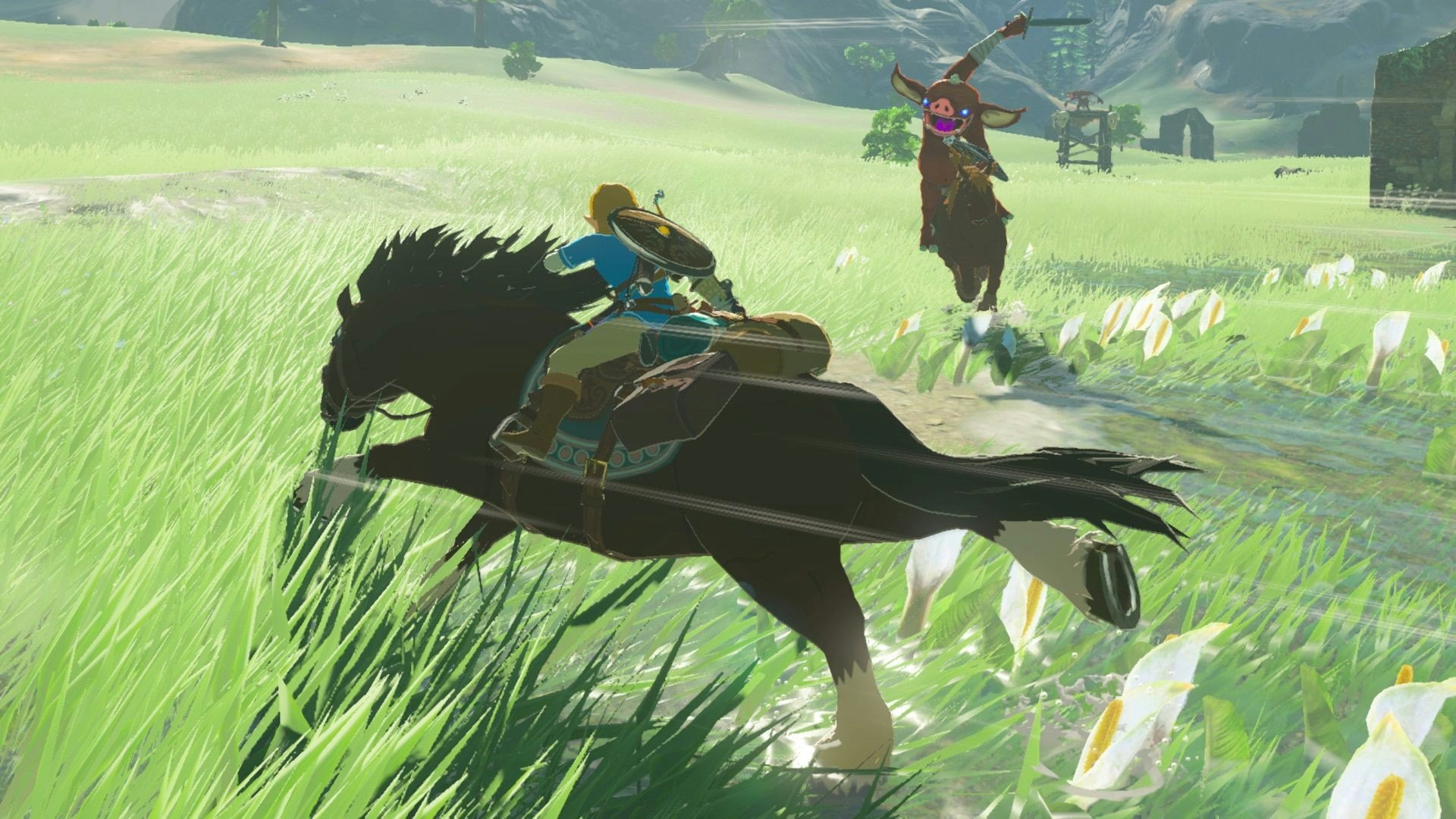
In reinventing the Zelda franchise with Breath of the Wild, Nintendo took inspiration from plenty of popular media. Stylistically and thematically, one of the clearest influences is the works of Studio Ghibli.
Tears of the Kingdom doubles down on these inspirations in the familiar-yet-altered version of Hyrule players explore. But these references go far beyond mere homage, enabling Tears of the Kingdom to build a unique world with a resonant theme at its heart.
Early trailers of Tears of the Kingdom revealed that Link’s right arm would be stricken by some illness. Immediate parallels were drawn between Link and Prince Ashitaka, the protagonist of 1997’s Princess Mononoke. Yet the parallels between these two characters and the media they come from were already clear in Breath of the Wild.

Breath of the Wild depicts a conflict between nature and technology that has seeped into every part of the world. Despite how Ganon’s blight continues to harm the land, nature preserves with stunning vistas and forests littered throughout the land.
The cel-shaded art direction also helps make the comparison to Princess Mononoke's lush forests and brutal mountains clear. Next to Ni No Kuni, Breath of the Wild is the game that lets the player inhabit a world that feels akin to beloved Ghibli films. Even the original reveal for Breath of the Wild directly mirrors the opening sequence of Princess Mononoke.
With Tears of the Kingdom, the Ghibli influences remain but the more direct inspirations shift away from Princess Mononoke and towards two other Ghibli classics.
A breathtaking moment in the opening minutes of Tears of the Kingdom comes when Link falls through the air towards islands peppered throughout the sky. In the distance, Castle Hyrule has been lifted from its terrestrial location and now floats above the land — a castle in the sky. If that isn’t a clear enough reference to Ghibli's 1986 film Castle in the Sky, then I don’t know what is.

Similarly, the Depths in Tears of the Kingdom allude to the cavernous areas in 1984’s Nausicaä of the Valley of the Wind. Combined with the returning landscape of the Princess Mononoke-inspired Hyrule, Tears of the Kingdom creates a three-tiered world with each level an homage to a specific Ghibli title.
Yet just like Breath of the Wild, the inspirations on Tears of the Kingdom go deeper than surface level. Castle in the Sky, Nausicaä, and Princess Mononoke all combine to form a loose trilogy of films from Ghibli that focus on stories of nature vs industry as well as an antiwar stance.
Castle in the Sky’s narrative especially feels relevant to Tears of the Kingdom with both including technology from an ancient civilization being used for battle but with questions surrounding how it should be used.
Protagonist Sheeta shares a burden with Zelda, too. Both are descended from a ruling family and struggling with the decision between doing their duty or pursuing their own life. This is one of the strongest aspects of Tears of the Kingdom, which portrays Zelda as a multidimensional character with a fascination with Zonai tech and history who is burdened with the duties of the royal family of Hyrule.

What the Ghibli movies lack that Tears of the Kingdom provides is a truly evil villain in Ganondorf. As he has been since the beginning of the Zelda series, Ganondorf (or Ganon while in beast form) is the literal personification of Evil.
In many iterations of the character that is a nebulous title. He is bad because he is just bad, nothing deeper. But for Tears of the Kingdom, the connection to the more mature Ghibli films, this personified Evil becomes more defined. Ganondorf represents the conflict between nature and technology, the endless cycle of regeneration made physical. While both Tears of the Kingdom and the Ghibli movies that inspired it are gorgeous spectacles, what makes them all masterpieces are their strong thematic narratives.
“It's dangerous to go alone!” Check out more of Inverse’s Tears of the Kingdom coverage:
- THE INVERSE REVIEW: Tears of the Kingdom Is the Best Nintendo Switch Game Ever Made
- Tears of the Kingdom’s Best New Mechanic Could Change the Series Forever
- Why Zelda Speedrunners Plan to Take It Slow With Tears of the Kingdom
- Tears of the Kingdom Doubles Down on Breath of the Wild’s Best Inspiration







